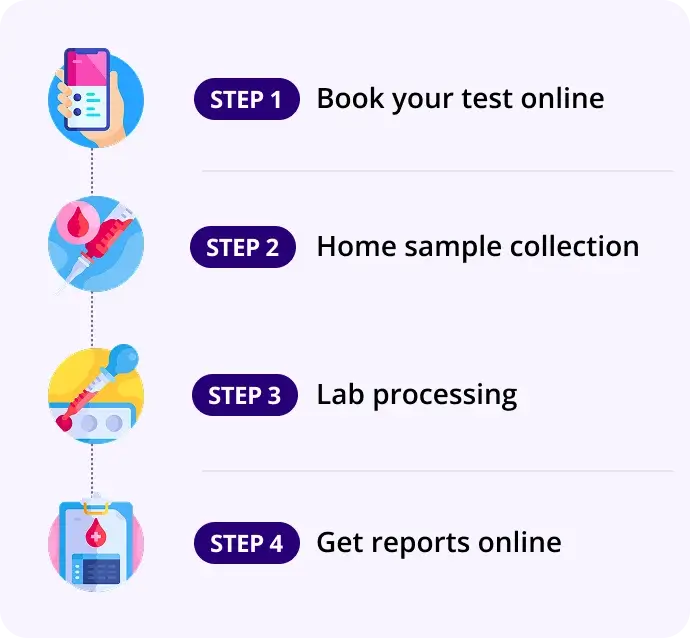Total Iron Binding Capacity (TIBC)
Report in 16Hrs
At Home
No Fasting Required
Details
Total iron binding capacity; helps differentiate between iron deficiency and anemia of chronic disease.
₹129₹440
71% OFF
🧪 What is Total Iron Binding Capacity (TIBC)?
TIBC measures the blood’s capacity to bind iron with transferrin, the main iron transport protein. It reflects the amount of transferrin available to bind iron and is used to evaluate iron metabolism and iron status.
❓ Why is the Test Done?
To:
- Diagnose and differentiate types of anemia, especially iron deficiency anemia
- Assess iron overload conditions
- Evaluate transferrin saturation (ratio of serum iron to TIBC)
- Monitor iron therapy effectiveness
📊 Normal Range
TIBC Level | Reference Range |
|---|---|
Adults | 240 – 450 µg/dL (43 – 81 µmol/L) |
Reference ranges may vary slightly by laboratory.
📈 Interpretation of Results
TIBC Level | Clinical Significance |
|---|---|
High TIBC | Iron deficiency anemia (transferrin production increased) |
Low TIBC | Chronic disease anemia, iron overload, malnutrition |
Normal TIBC | Normal iron binding capacity |
🧠 Associated Conditions
Condition | Details |
|---|---|
Iron deficiency anemia | Elevated TIBC due to increased transferrin production |
Anemia of chronic disease | Low or normal TIBC due to reduced transferrin synthesis |
Hemochromatosis | Low TIBC with high serum iron |
Liver disease | May affect transferrin production |
🔄 Related / Follow-Up Tests
- Serum iron
- Transferrin saturation (serum iron / TIBC ratio)
- Serum ferritin
- Complete blood count (CBC)
✅ Fasting Required?
Test | Fasting Required |
|---|---|
TIBC | ❌ No |
📝 Summary Table
Parameter | Details |
|---|---|
What | Measures iron binding capacity of transferrin in blood |
Why | Diagnose iron deficiency or overload |
Normal Range | 240–450 µg/dL |
High TIBC | Iron deficiency anemia |
Low TIBC | Chronic disease anemia, iron overload |
Associated Conditions | Iron deficiency, anemia of chronic disease, hemochromatosis |
Follow-up Tests | Serum iron, transferrin saturation, ferritin |
Fasting Required | ❌ No |
How our test process works!

